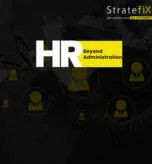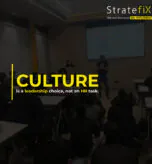The Indian Engineering, Procurement, and Construction (EPC) sector is rapidly evolving, projected to reach USD 126.91 billion by 2025 and growing at a robust 22% CAGR. This sector is integral to India’s infrastructure ambitions, including energy, transportation, urban development, and industrial projects. Key drivers include increased investment in renewable energy, government infrastructure programs, and adoption of digital technologies like BIM and IoT. The demand for agile, efficient, and sustainable project execution continues to rise, pushing EPC companies to innovate and modernize operations to maintain competitive advantage.
Headquartered in Surat, Gujarat, this leading EPC and infrastructure solutions provider has earned a strong reputation across the region for technical excellence and comprehensive project delivery. Specializing in integrated security, networking, surveillance, and communication systems, the company supports diverse infrastructure needs with scalable, future-ready solutions. As the company expanded rapidly, management realized that sustaining growth required more disciplined internal processes, clearer roles, and technology-driven operational improvements. Addressing these organizational challenges became critical to maintaining service quality and execution reliability.
Operational Barriers Hindering Sustainable Growth
As the company experienced rapid growth, it faced a range of operational challenges typical of expanding EPC firms, which threatened scalability, efficiency, and profitability:
- Lack of Defined KPIs and Accountability: There were no clear performance indicators or responsibility matrices, which caused leadership to constantly intervene in day-to-day decisions, reducing their ability to focus on strategic priorities.
- Inconsistent and Fragmented Workflows: Without standardized operating procedures (SOPs), different teams followed varied work styles and approaches, resulting in inconsistent project execution, quality deviations, and frequent delays.
- Procurement and Material Management Bottlenecks: Disconnected procurement processes and inadequate inventory controls led to material shortages and misaligned deliveries, causing project disruptions and cost overruns.
- Underutilization of ERP and Reporting Systems: The existing ERP system was largely a record-keeping tool with limited management insights. Lack of standardized report formats and dashboards deprived leadership of real-time data needed for proactive decision-making.
- Organizational Structure Ambiguities: Unclear roles and overlapping responsibilities at leadership and departmental levels hindered cross-functional coordination, creating inefficiencies and confusion.
- Communication Gaps and Cultural Issues: Meetings lacked structure and purpose, feedback mechanisms were weak, and employee motivation suffered due to lack of recognition and engagement initiatives. Junior staff lacked clarity on expectations and often saw inconsistent behavior from senior leaders.
- Resource and Skill Constraints: The firm struggled with balancing workforce utilization, skill shortages in critical areas, and managing a dispersed partner network, impacting project timelines and quality.
- Resistance to Change: Established informal processes and cultural inertia made it difficult to implement new systems and standardized approaches rapidly and effectively.
Addressing these challenges was essential for the company to transition from a reactive, people-dependent operation to a system-driven, scalable organization capable of sustaining growth, improving productivity, and enhancing client satisfaction.
Strategic Consulting Approach: Unlocking Process Excellence
The operational transformation was driven by a holistic and collaborative approach focusing on key strategic levers to address the company’s core challenges:
- Clear Metrics and Accountability: The Stratefix consulting team worked with leadership to define measurable Key Result Areas (KRAs) and Key Performance Indicators (KPIs) tailored for each department and leadership role. This introduced clarity in ownership and established regular evaluation cycles to track performance and continuous improvement.
- Standardized Processes: Comprehensive Standard Operating Procedures (SOPs) were developed and implemented across all departments. Regular audits and compliance checks ensured adherence, leading to consistent execution and reduction of variances in project delivery and quality.
- Enhanced Operational Visibility: Dynamic, role-based dashboards were created to provide real-time insights on operational, financial, and project performance metrics. These dashboards enabled proactive decision-making and facilitated early identification of bottlenecks or deviations.
- ERP System Modernization: A detailed ERP gap analysis was conducted followed by phased rollouts of new modules and upgrades to existing systems. This improved data integration, workflow automation, and empowered management with scalable and timely information tools.
- Organizational Restructuring and HR Alignment: Job roles, reporting lines, and responsibility matrices were redefined to eliminate overlaps and clarify ownership. The organization adopted 5S workplace practices, introduced structured HR evaluations, and strengthened talent management to support operational discipline.
- Culture and Change Management: Leadership forums, regular review meetings, and enhanced communication channels were instituted to foster transparency and accountability. Employee recognition programs and training workshops were launched to motivate staff, encourage collaboration, and embed continuous improvement mindsets.
- Skill Development and Cross-Functional Training: The intervention included focused initiatives to upskill teams, promote multi-skilling, and improve workforce flexibility to adapt to evolving project demands.
- Process Automation Integration: Where applicable, automation technologies and digital tools were integrated to streamline repetitive workflows and reduce manual errors, paving the way for digital transformation in project management and execution.
Departmental Transformation in Action
The transformation process saw several departments set exemplary standards in execution:
- Service Department: Fully embraced standardized operating procedures (SOPs) and leveraged dashboard-driven performance monitoring. This operational rigor significantly improved service planning, issue responsiveness, and customer satisfaction, making the department a model for others to emulate.
- Human Resources and Administration: Spearheaded the rollout of Key Performance Indicators (KPIs) across the organization, formalized process trainings, and consistently enforced workplace discipline with 5S methodologies, driving a culture rooted in accountability and professionalism.
- Presales Department: Instituted structured tendering workflows and enhanced sales pipeline visibility, which resulted in higher proposal accuracy and increased tender success rates.
Additional initiatives included focused skill development programs promoting workforce multiskilling, adoption of digital tools to streamline workflows, and leadership forums that enhanced cross-functional communication and alignment.
Measurable Outcomes: From Firefighting to Future-Ready
Post-implementation, the company observed transformational improvements across several dimensions:
- Leadership transitioned from day-to-day firefighting to strategic, growth-oriented decision making.
- Consistency and predictability in project and operational execution improved markedly, reducing delays and cost overruns.
- Real-time dashboards facilitated proactive problem identification and operational transparency.
- Streamlined procurement and workforce allocation aligned closely with business objectives, optimizing resource utilization.
- Enhanced communication channels and employee recognition programs fostered a motivated and collaborative work environment.
- The organization successfully moved from a people-dependent model to a system-driven, scalable, and efficient enterprise, better positioned for future growth.
Conclusion: Setting a Benchmark for EPC Operational Resilience
This case illustrates how a Surat-based EPC and infrastructure solutions company successfully addressed core operational challenges through targeted consulting interventions focused on governance, process discipline, and technology enablement. By transforming organizational culture and embedding system-based management practices, the firm achieved sustainable growth and enhanced market competitiveness. The experience serves as a blueprint for other companies in the sector seeking to professionalize operations, increase efficiency, and build resilient, scalable businesses prepared to meet the complex demands of today’s infrastructure landscape.







